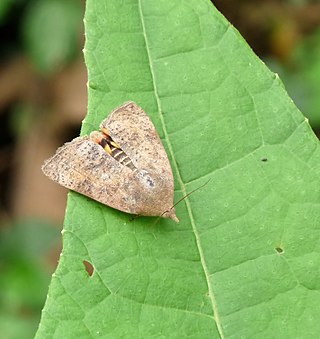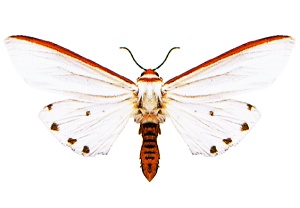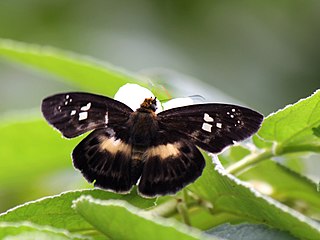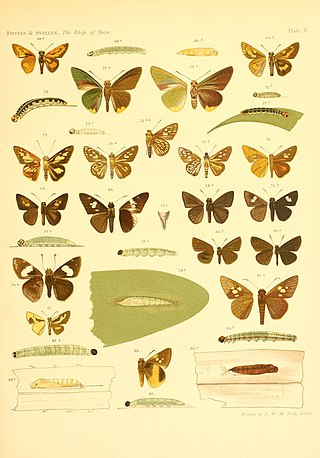
Gangara thyrsis, commonly known as the giant redeye, is a species of butterfly belonging to the family Hesperiidae. It breeds on a number of palm species.

Coleophora is a very large genus of moths of the family Coleophoridae. It contains some 1,350 described species. The genus is represented on all continents, but the majority are found in the Nearctic and Palaearctic regions. Many authors have tried splitting the genus into numerous smaller ones, but most of these have not become widely accepted.

Gracillariidae is an important family of insects in the order Lepidoptera and the principal family of leaf miners that includes several economic, horticultural or recently invasive pest species such as the horse-chestnut leaf miner, Cameraria ohridella.

Hyblaeidae are the "teak moths", a family of insects in the Lepidopteran order. The two genera with about 18 species make up one of the two families of the Hyblaeoidea superfamily, which in the past has been included in the Pyraloidea. Recent phylogenetic studies find varying relationships of Hyblaeoidea among Ditrysian Lepidoptera: Mutanen et al. (2010) find the superfamily to group either with Pyraloidea, or – more often – with Thyridoidea or butterflies. The results of Wahlberg et al. (2013) and Heikilä et al. (2015) indicate a sister-group relationship with Pyraloidea.

Carposinoidea, the "fruitworm moths", is a superfamily of insects in the lepidopteran order. The superfamily is also known as Copromorphoidea, which is a junior synonym. These moths are small to medium-sized and are broad-winged bearing some resemblance to the superfamilies Tortricoidea and Immoidea. The antennae are often "pectinate" especially in males, and many species of these well camouflaged moths bear raised tufts of scales on the wings and a specialised fringe of scales at the base of the hindwing sometimes in females only; there are a number of other structural characteristics. The position of this superfamily is not certain, but it has been placed in the natural group of "Apoditrysia" "Obtectomera", rather than with the superfamilies Alucitoidea or Epermenioidea within which it has sometimes previously been placed, on the grounds that shared larval and pupal characteristics of these groups have probably evolved independently. It has been suggested that the division into two families should be abandoned.

Aloa is a genus of tiger moths in the family Erebidae.

Acerbas is an Indomalayan genus of skipper butterflies.

Baoris is a genus of grass skippers in the family Hesperiidae.It is found in the Indomalayan realm

Gerosis is an Indomalayan genus of spread-winged skippers in the family Hesperiidae.There are six species found from China and Northeast India to Java and the Sula Archipelago east of Sulawesi.They are lowland forest butterflies. They seek sunny areas between 1 and 4 metres above ground, but females can be encountered in the shade.

Hidari is a genus of grass skipper butterflies in the family Hesperiidae.

Hyarotis is a genus of grass skippers in the family Hesperiidae.It is found in the Indomalayan realm

Pirdana is a genus of grass skippers in the family Hesperiidae.

Plastingia is a genus of grass skipper butterflies in the family Hesperiidae.

Salanoemia is a genus of grass skipper butterflies in the family Hesperiidae.

Sovia is a genus of grass skipper butterflies in the family Hesperiidae. The species are found in the Indomalayan realm The genus was erected by William Harry Evans in 1949

Suada is a genus of grass skippers in the family Hesperiidae.

Suastus, whose members are called palm bobs, is a genus of grass skipper butterflies in the family Hesperiidae.

Taractrocera is a genus of skippers in the family Hesperiidae.

















